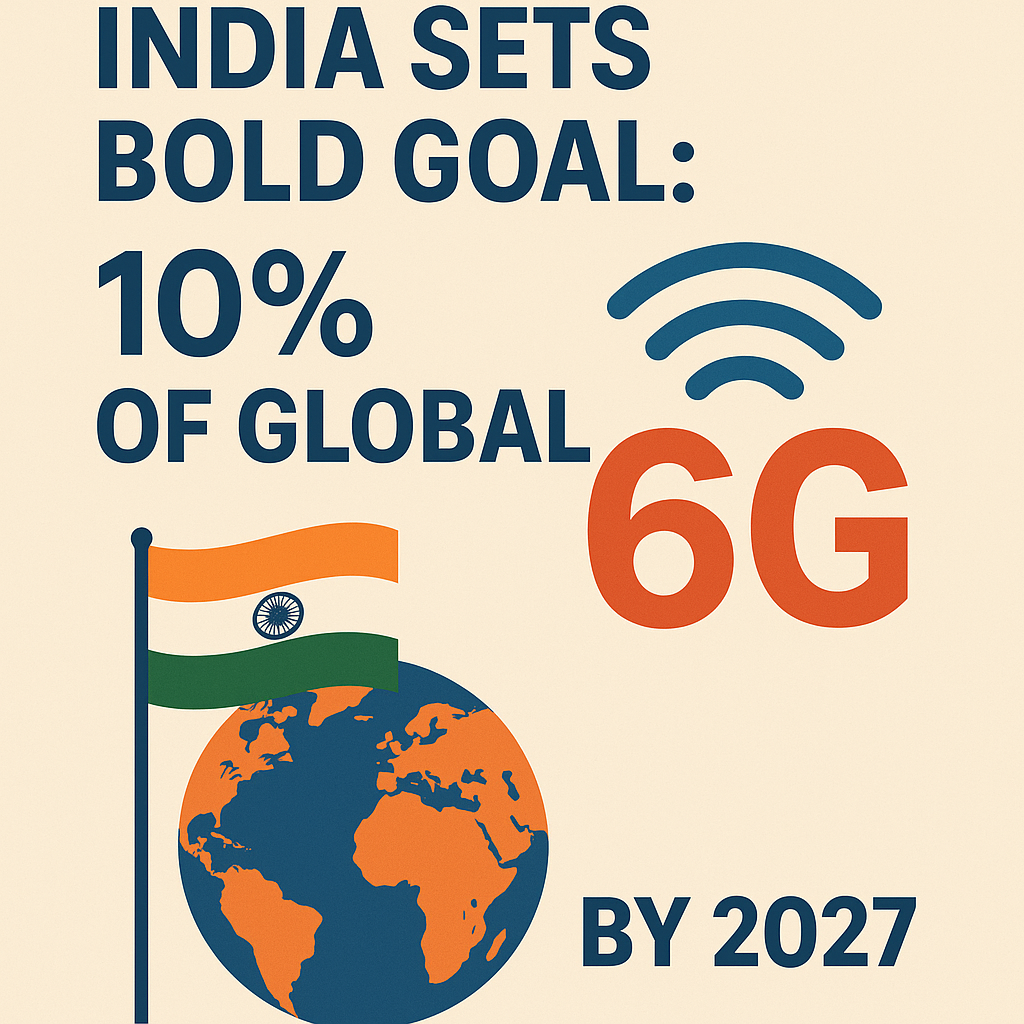In just a decade, our digital lifestyle has evolved from buffering frustration to real-time 4K streaming, seamless video calls, and smart home control with a tap. But what's next in this rapid technological evolution?
Enter 6G, the sixth-generation wireless technology poised to transform not just internet speed, but every corner of life—holographic communication, instant AI help, smart cities, and automated vehicles. More than a buzzword, 6G is set to redefine how we connect, work, and live.
What is 6G Technology?
6G stands for sixth-generation mobile network technology, a successor to 5G. While 5G brought speed, 6G brings intelligence, integration, and instantaneity. Here's what it promises:
- Speed up to 1 Terabit per second (Tbps) — 1000x faster than 5G
- Ultra-low latency for real-time feedback
- Massive device connectivity — from smart wearables to autonomous drones
- Holographic video calls and immersive VR/AR
- Smart factories and robotic surgeries powered by AI and IoT
Imagine downloading a 4K movie in 1 second, or attending a virtual meeting in holographic form—that’s 6G in action.
The Global 6G Race: Who’s Leading?
China
China is currently ahead in the 6G race:
- Beijing made 6G a national priority
- Achieved 100 Gbps satellite-to-ground laser communication
- Tech giants like Huawei and ZTE are leading trials
- Government-led working groups and R&D funding
United States
The U.S. is pushing back through:
- The Next G Alliance, led by AT&T, Verizon, Qualcomm
- Focus on security, resilience, and private-sector innovation
- Emphasis on standardization and spectrum allocation
Europe
Europe anticipates 6G standardization by 2025:
- Players: Nokia, Ericsson, Deutsche Telekom
- EU’s Hexa-X project focuses on sustainable and inclusive 6G tech
India
India is emerging as a powerful contender:
- Launched Bharat 6G Vision in 2023
- Target: 6G deployment by 2030
- Collaboration with Japan and Finland
- Companies like Reliance Jio and Bharti Airtel exploring 6G pilots
- Government aims to file 10% of global 6G patents by 2027
India’s approach is rooted in open-source innovation and inclusivity, focusing on rural connectivity, low-cost deployment, and indigenous technologies.
How 6G Will Change Our Lives
With 6G, the future goes beyond phones:
- Smart Cities: Real-time traffic, waste, and utility management
- Healthcare: Remote robotic surgeries, health sensors with predictive AI
- Education: Holographic tutors and immersive remote learning
- Entertainment: 3D streaming, real-time VR games, and hybrid reality
- Industry 5.0: Fully automated factories with AI-human collaboration
6G isn't just about connection—it's about experience.
6G vs 5G: Key Differences
6G and 5G differ significantly in several key areas. In terms of speed, while 5G offers peak download speeds of up to 10 Gbps, 6G is expected to deliver speeds reaching 1 Terabit per second (Tbps), making it 100 times faster. Latency in 5G ranges between 1–10 milliseconds, whereas 6G aims for sub-millisecond latency, enabling real-time responsiveness.
Frequency-wise, 5G operates primarily in the millimeter wave bands (24–100 GHz), but 6G will shift to ultra-high-frequency terahertz bands (100 GHz–10 THz), allowing unprecedented data throughput. Unlike 5G, which has limited AI integration, 6G is designed to embed artificial intelligence deeply into the network, enabling dynamic, self-optimizing systems.
Finally, 5G enhances mobile broadband and IoT connectivity, but 6G moves beyond, aiming to create seamless human-to-machine interactions, ultra-intelligent automation, and a fully immersive digital ecosystem.
When Will 6G Be Available?
Experts expect commercial 6G networks to roll out around 2030. R&D is happening now across:
- Academic institutions
- Corporate labs
- Government-backed initiatives
In the coming years, we’ll see early prototypes, pilot programs, and standardization efforts accelerate.
Challenges Ahead
With all its potential, 6G faces challenges:
- Massive infrastructure cost
- Privacy and data security risks
- Spectrum availability
- Digital divide in rural and poor regions
- Environmental impact of higher energy demands
These are areas where global cooperation and regulation will be essential.
The Future is Being Written Now
The 6G revolution has begun. It's more than a technology upgrade—it's a paradigm shift in how we live, interact, and evolve. The country or company that leads this race won’t just dominate mobile tech—they’ll help shape the digital backbone of the 21st century.
As 6G moves from labs to life, the question is: Are we ready for it?



